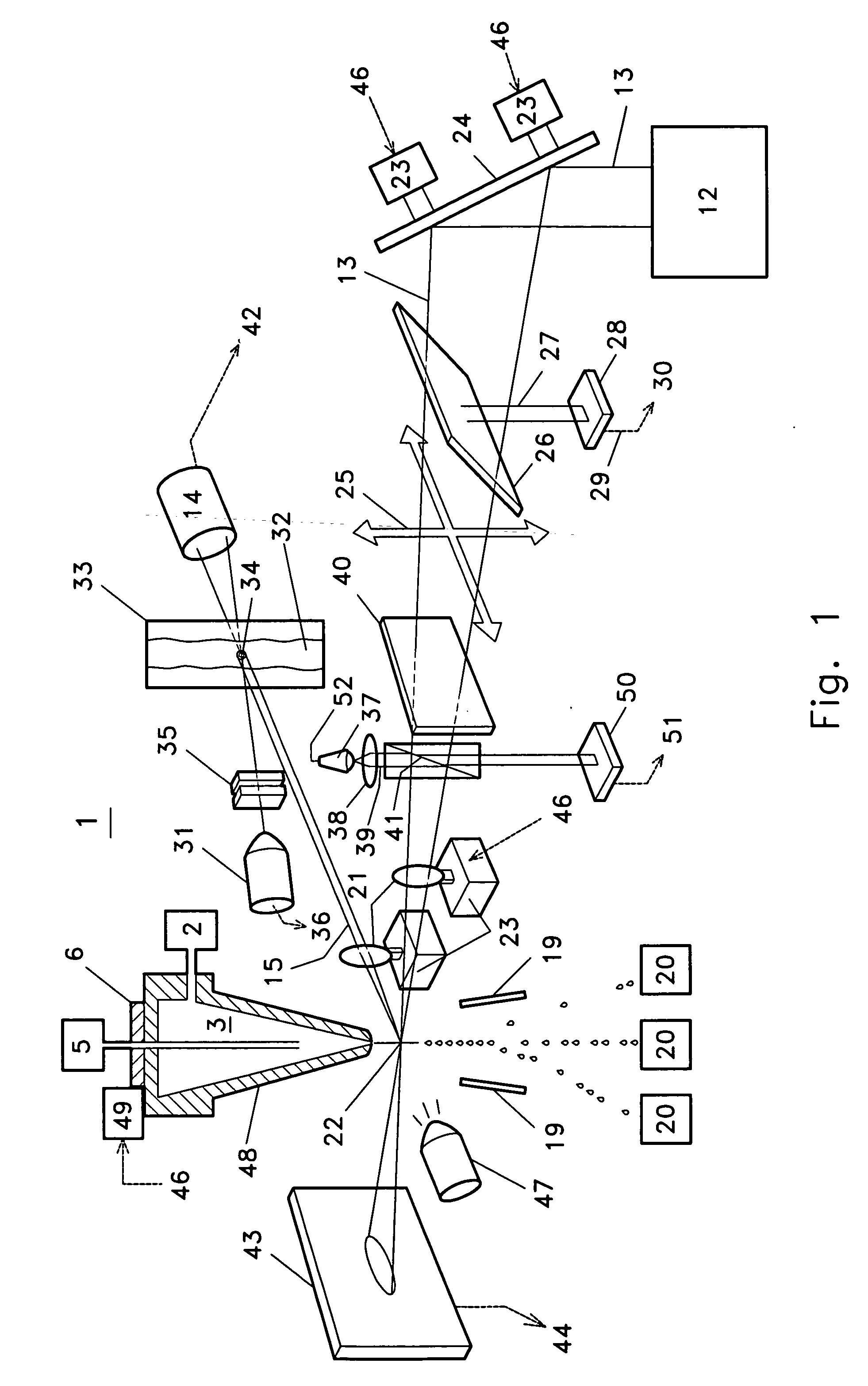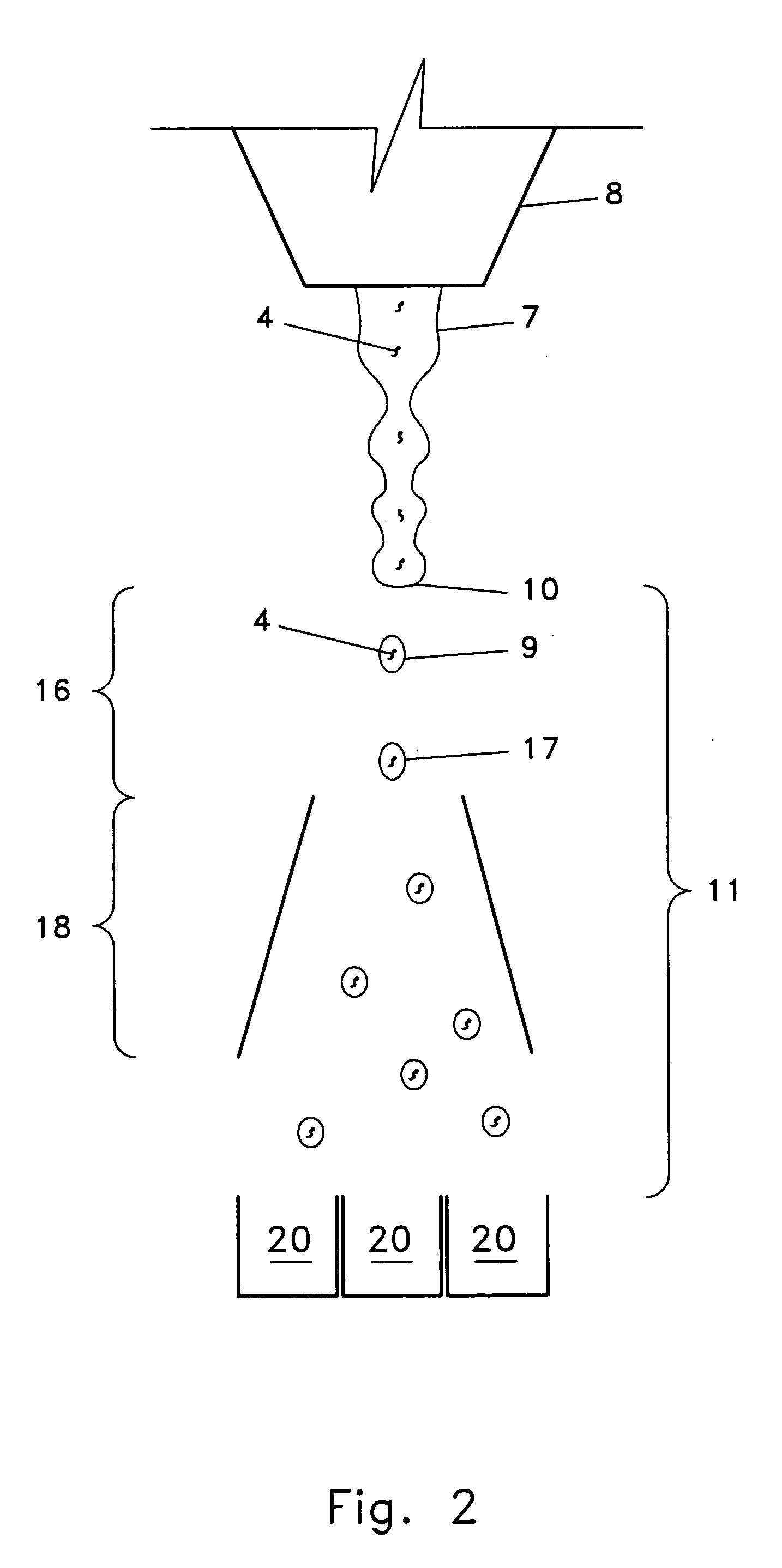Flow cytomer with active automated optical alignment system
- Summary
- Abstract
- Description
- Claims
- Application Information
AI Technical Summary
Benefits of technology
Problems solved by technology
Method used
Image
Examples
Embodiment Construction
[0023] The invention provides an alignment and monitoring system which may be used with regard to various applications. While the description provides detailed examples in the context of droplet or continuous jet flow cytometer application, such examples are not meant to limit the use of the invention to applications in flow cytometry but should be understood to be illustrative of the broad range of applications in which the invention can be used.
[0024] Now referring primarily to FIGS. 1 and 2, it can be understood that particular embodiments of the invention can provide an alignment and monitoring system that can be implemented in conjunction with a droplet or continuous jet flow cytometer(s). In a flow cytometer (1) embodiment of the invention, a fluid stream source (2) provides a fluid stream (3) into which particles (4) can be suspended. A source of particles (5) can insert the particles from time to time such that at least one particle becomes entrained in or is hydrodynamicall...
PUM
 Login to View More
Login to View More Abstract
Description
Claims
Application Information
 Login to View More
Login to View More - R&D
- Intellectual Property
- Life Sciences
- Materials
- Tech Scout
- Unparalleled Data Quality
- Higher Quality Content
- 60% Fewer Hallucinations
Browse by: Latest US Patents, China's latest patents, Technical Efficacy Thesaurus, Application Domain, Technology Topic, Popular Technical Reports.
© 2025 PatSnap. All rights reserved.Legal|Privacy policy|Modern Slavery Act Transparency Statement|Sitemap|About US| Contact US: help@patsnap.com



